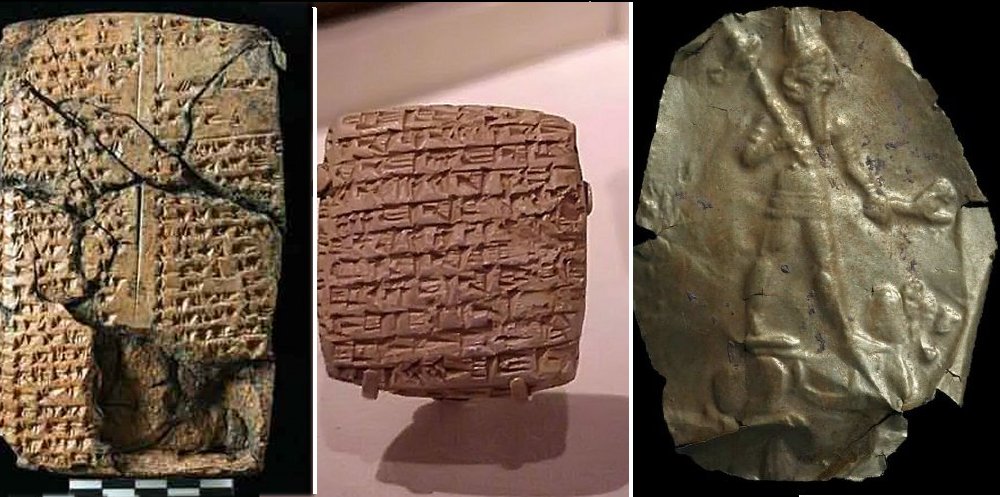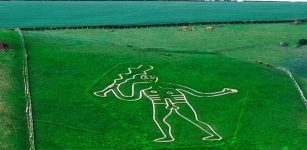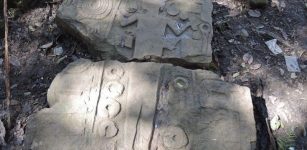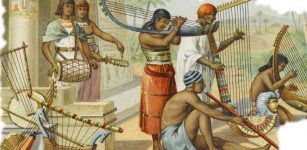Statuettes Of Gods And Goddesses Unearthed At Ancient Site Of Kültepe
Conny Waters - AncientPages.com - One of the oldest cities in Asia Minor, the ancient site of Kültepe (also known as Kanesh) had consistently been inhabited from 3,000 B.C.-2,500 BC to the end of the Roman period.
 Some of the figurines found recently at the Kültepe archaeological site, Kayseri, central Turkey, Image credit: DHA
Some of the figurines found recently at the Kültepe archaeological site, Kayseri, central Turkey, Image credit: DHA
Kültepe was situated on the crossroads of the trade routes from Sinope to the Euphrates and from the Persian Royal Road that extended from Sardis to Susa during the over 200 years of Achaemenid Persian rule.
Also in Roman times, a trade route crossed Kültepe and led from Ephesus to the East, and based on ancient sources, Cappadocia's kings once used Kültepe as the residential area.
In recent decades, archaeologists have made many important discoveries in the region that include the ruins of the first city founded by the Hittites in Anatolia contained administrative and religious buildings, houses, shops, and workshops.
 Hittite palace at Kültepe by Klaus-Peter Simon
Hittite palace at Kültepe by Klaus-Peter Simon
Now, archaeologists have unearthed the statuettes of gods and goddesses worshiped by the Anatolian people thousands of years ago, at the Kültepe, also known as Kanesh, an ancient site located in the central Kayseri province, writes Daily Sabah.
The site is composed of two parts: Upper Mound-Kanesh and Lower Town-Karum. At the site Karum (Pazarşehir), lying next to Kültepe, many clay tablets with cuneiform scripts were found in the ruins. Those tablets revealed important aspects of Kültepe and what role the city played as it served as a trade hub between Assyrian colonies and Hittite inhabitants in 2,000 B.C.
See also:
Kingdom Of The Hittites Kültepe Reveals Remarkable Clay Tablets, Ruins And Artifacts
Various aspects of daily life in Kültepe, such as relationships and family matters, are also documented on these tablets (now in the Kayseri Archaeology Museum).
 Left: Clay tablets discovered at Kültepe; Right: A Hittite God from Kültepe
Left: Clay tablets discovered at Kültepe; Right: A Hittite God from Kültepe
Professor Fikri Kulakoğlu, head of the Kültepe excavation team from the Faculty of Languages and History and Geography at Ankara University, spoke to Anadolu Agency (AA) about the excavations and latest finds. He said that one of the two tablets taken out of Kültepe in the late 1800s and sold to an antique shop in Istanbul was taken to the British Museum while the other was sent to the Louvre Museum.
 Image credit: DHA
Image credit: DHA
Kulakoğlu also said that some scientists who were wondering where the city of Kanesh mentioned on these tablets are, came to Turkey during the earlier periods. Among others, Kulakoğlu mentioned a Czech named Bedrich Hrozny who is the first person in the world to solve the Hittite language. He came to Kültepe to find out the location of the Kanesh city mentioned on the tablets. He destroyed one-third of the palace called the Warsama Palace in the archaeological site today. In line with excavation techniques at the time, he dug a crater-like hole. He was disappointed when he could not find any other tablet there. Meanwhile, there was an outbreak of malaria in the area. Hrozny, a former soldier, brought a quinine sulfate tablet against malaria with him.
People came to him because of the epidemic and asked for this medicine. He gave a quinine tablet in exchange for a cuneiform tablet. So, he collected tablets from the villagers. Thanks to these tablets, he proved that Kültepe is the city of Kanesh.
 Artifacts from Kültepe
Artifacts from Kültepe
He took these tablets to his country, and they were returned to Turkey in 1936.
“The tablets at the Istanbul Archaeological Museum are the ones he worked on and returned,” Kulakoğlu added.
Recalling that they have found god and goddess figurines in bulk in excavations carried out in the room of a building in 2017, Kulakoğlu said:
“We have found 15 more idols (statuettes) this year. Excavations continue in this area. The structure we have excavated is probably a very large and unique place in Anatolia, with formal and religious characteristics. The idols unearthed from here are artifacts showing the beliefs of Anatolian people as the beings they worshipped 4,500 years ago.
"Some of them were portrayed as sitting on the throne, and some are schematic. These are the artifacts that are not found anywhere but Kültepe. It is exciting that you find an artifact that a person worshipped 4,500 years ago with your hand.”
There are plans to display the figurines of gods and goddesses unearthed from the excavations this year at a temporary exhibition at the Kayseri Museum.
Written by Conny Waters - AncientPages.com Staff Writer




















